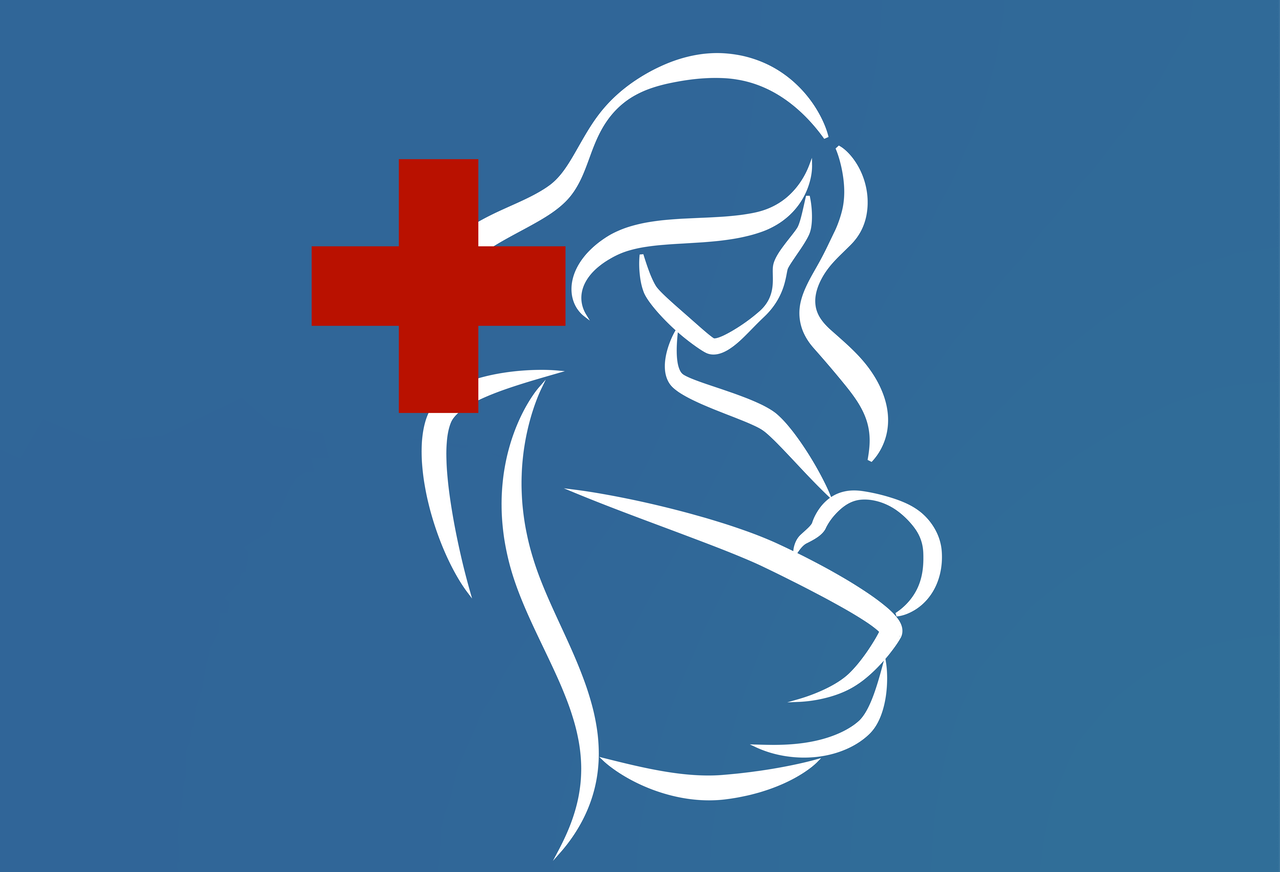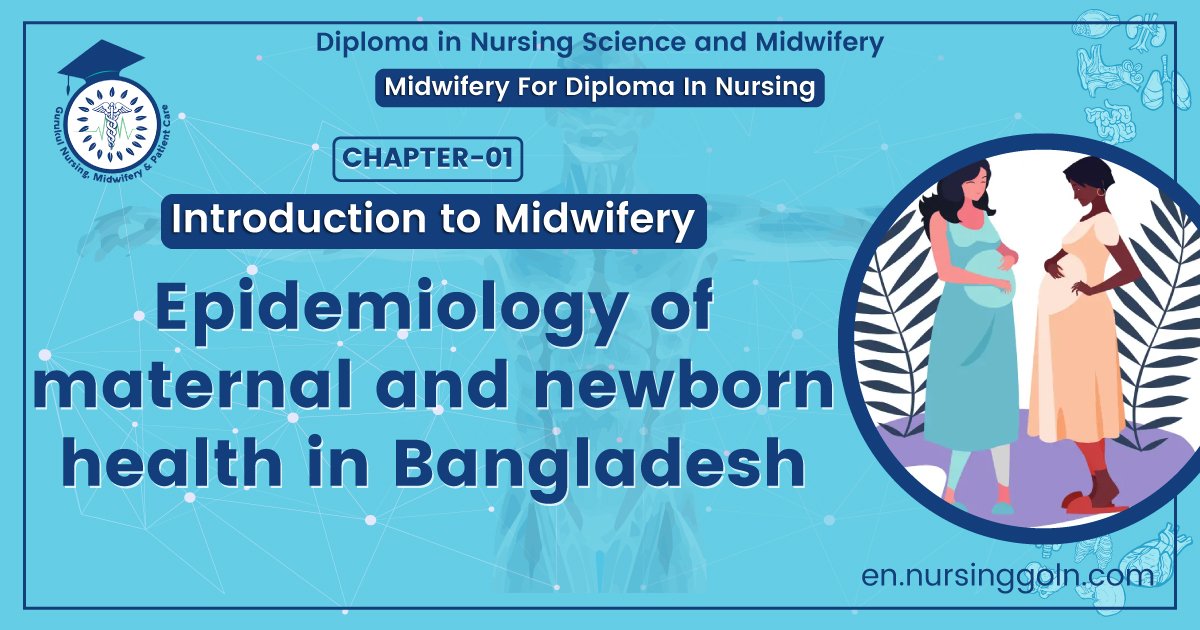Epidemiology of maternal and newborn health in Bangladesh – This course is designed to understand the care of pregnant women and newborn: antenatal, intra-natal and postnatal; breast feeding, family planning, newborn care and ethical issues, The aim of the course is to acquire knowledge and develop competencies regarding midwifery, complicated labour and newborn care including family planning.
Epidemiology of maternal and newborn health in Bangladesh
Maternal mortality
Definition of Maternal Death/Mortality:
According to WHO:
Maternal mortality or maternal death is the death of a woman while pregnant or within 42 days of termination of pregnancy, irrespective of the duration and site of the pregnancy, from any cause related to or aggravated by the pregnancy or its management but not from accidental or incidental causes.
According to WHO maternal mortality rate (MMR), in Bangladesh was 24011.00,000 in the year 2010
or
Number of death of women during pregnancy or 42 days after termination of pregnancy, irrespective of gestational age and site due to any cause related to or aggravated by the pregnancy or its management but not from the incidental or accidental causes
[Ref by-K. Park/25th edition]

Causes of Maternal Mortality in Bangladesh:
A. Obstetric causes:
- Toxemias of pregnancy
- Heamorrhage
- Infection
- Obstructed labour
- Septic abortion
B. Non-obstetric causes:
- Severe anaemia
- Associated diseases i.e. – cardiac, renal, hepatic, metabolic & infectious.
- Malignancy
- Accidents
C. Social causes/factors:
- Age at childbirth Parity
- Too close pregnancies
- Family size
- Malnutrition
- Poverty
- Illiteracy & ignorance
- Delivery by untrained dais Poor environmental sanitation
- Poor communications & transport facilities
- Social customs-etc.
Preventive & Social Measures for Reducing Maternal Mortality & Morbidity:
Any attempts to lower MMR must take in consideration the following measures
1. Early registration of Pregnancy
2. At least 4 antenatal check-up.
3. Dietary supplementation, including correction of anaemia.
4. Prevention of infection and hemorrhage during puerperium.
5. Prevention of complications e.g. eclampsia, malpresentation, ruptured uterus.
6. Treatment of medical conditions e.g. hypertension, diabetes, TB etc.
7. Antimalaria & tetanus prophylaxis.
8. Clean delivery practice
9. Provision of local trained dais & female health workers.
10. Institutional deliveries for woman with bad obstetric history and risk factors.
11. Promotion of family planning- to control the number of children to not more than two and spacing birth.
12. Identification of every maternal death, and searching for its cause
13. Safe abortion services.

Definition of MMR:
It is the number of death of mother from pregnancy, delivery and puerperal causes during a calendar year per thousand of childbirth.
or
Number of maternal deaths in a given period per 100,000 women of reproductive age during the same time period.
Calculation:
We can calculate MMR by following formula-
Total number of female deaths due to complications of pregnancy, child birth or within 6 weeks of delivery from ‘puerperal cause’in an area during a given year
MMR=————————————————————————-x1000
Total number of live births in the same area in that year According to WHO maternal mortality rate (MMR) in Bangladesh was 24011.00,000 in the year 2010.
Significance of MMR:
1. It reflects inadequacy of health care services for mothers.
2. It reflects a low standard of living & socio-economic status of the community
3. It is the indicator of the availability, utilization and effectiveness of health care.
4. It reflects the state of public health & hygiene & environmental sanitation.
5. It also reflects the position of the woman in society
Infant mortality rate:
Infant mortality rate is defined as the rate of infant death registered in a given years to the total number of live births registered in the same year, usually expressed as a rate per 1000 live births.
It is given by the formula:
Number of deaths under one year of age in an area during a year
IMR=——————————————————————————-x100
Number of live births in the same area and same year
IMR57/ 1000 live birth.
Neonatal Mortality Rate:
The ratio of neonatal deaths in a given year to the total number of live births in the same year; usually expressed as a rate per 1000.
Number of deaths of children Under 28 days of age in a year
NMR =————————————————————————-x100
Total live births in the same year
Neonatal mortality rate = 30/1000 live birth
Post-Neonatal Mortality Rate:
The ratio of post-neonatal, paths in a given year to the tota the total number of live births in the same year.
Post-neonatal mortality rate = 133/ 1000 live birth
[Ref by: K. Park/25th edition]
Definition of Maternal morbidity:
The WHO defines maternal morbidity as “a complication or illness that arises during gestation, birth or the puerperium, which affects the woman’s integrity, and physical or mental health, sometimes permanently. Causes can vary; some examples include obstetric complications, interventions, cultural practices or coercion”.
or
Obstetric morbidity originates from any cause related to pregnancy or to its management any time during antepartum, intrapartum and post-partum period usually within 42 days after confinement.
(Ref by: K. Park/25th edition + Prof. Latifashamsuddin/24/235]

Causes/Types of Maternal Morbidity:
A. Direct obstetric morbidity:
a) Temporary:
➤ Anti-partum haemorrhage (APH)
➤ Post-partum haemorrhage (PPH)
➤ Eclampsia.
➤ Obstructed labour.
➤ Rupture uterus.
➤ Ectopic pregnancy
➤ Sepsis
➤ Molar pregnancy.
b) Permanent:
➤ Chronic vesico-vaginal fistula (VVF).
➤ Chronic recto-vaginal fistula (RVF).
➤ Prolapse uterus
➤ Secondary infertility.
B. Indirect obstetric morbidity:
a) Medical disorder:
➤ Malaria.
➤ TB.
➤ Hepatitis
➤Anaemia during pregnancy.
C. Reproductive Morbidity:
➤ Obstetric morbidity.
➤ Gynaecological morbidity
➤ Contraceptives morbidity.

Read More….
